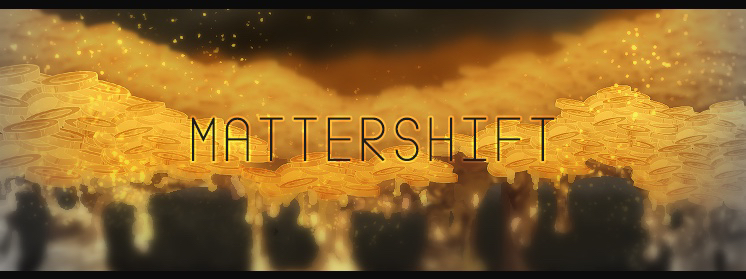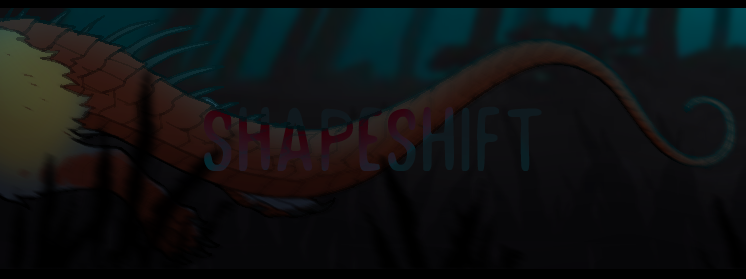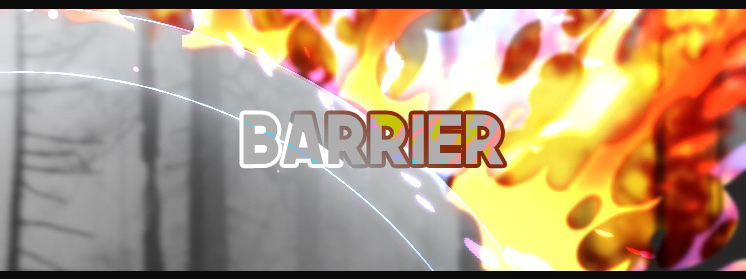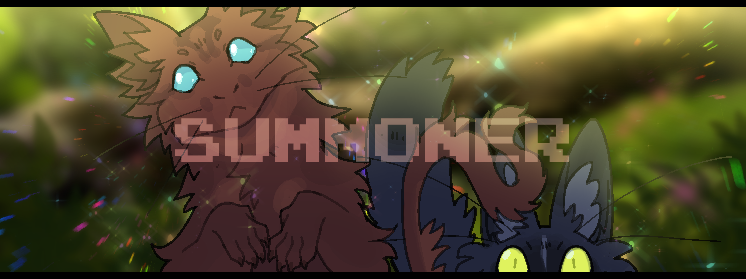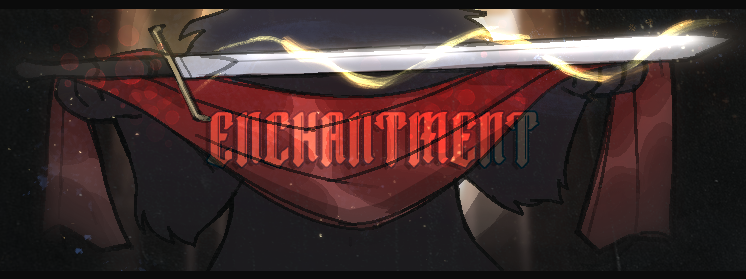Below are the subclasses for the Transmutation Magic Class. Click on the banners to view more info and compare to other subclasses!
Level I
- User is able to make changes to the original state of an object into an alternate state, such as changing a small puddle of water into steam without the need for heat (Liquid > Solid > Gas). Matter changes may last up to thirty minutes before it reverts back to the original state.
- User may be able to change the molecular density of a non-living object with intense concentration, or dismantle it by taking apart its structure. The longer the user holds concentration, the more exhausted they become. This ability cannot be used on living objects.
- Can change dirt into pyrite ("fool's gold"). A fun party trick!
- User can suffer from headaches and fatigue if powers are overused.
Level II
- With constant concentration, users can disintegrate a small area of any material (slightly larger than a paw) and replace it with another of their choice (if desired). When used on living targets, they will experience an intense twisting, burning sensation, but no disintegration will occur.
- Capable of “phasing” through obstacles or structures by moving the material around to fit their body, or rebuilding them into something else (such as a door for others to move through).
- Users can “harvest” a moderate amount of material, magically storing it within their body to manifest for later use. For example, they may harvest rock, later throw it onto the ground, and shift it into spires of sharp gems from a distance.
Level III
- Disintegration no longer needs as much focus to accomplish, and increases to an area roughly around half the mass of an average sized cat. On living targets, the feeling will also intensify, making them as if they are becoming 'undone' or 'unmade'. Users can also temporarily fuse other organic elements onto targets - for example, fusing surrounding elements to someone's paws to make their limbs heavier or unable to move.
- With light concentration, user can make molucules of a touched area or item unstable. When thrown or interacted with by a target, the item will explode or implode depending on the user's preferences.
- Users can take twice as much equipment with them into expeditions compared to a normal individual. All items, collected or otherwise, are stored in the same way as the material storage is in the previous level. All equipment is essentially 'remade' when summoned.
- Can reverse time on a given object, breaking it down to its most basic parts or restoring something old/ancient back to its original state.
Level I
- Capable of temporarily changing cosmetic areas of their body (equalling to no more than half their total mass) into another material. This ability requires concentration and, if broken, the shapeshift immediately fades. Shapeshifting can also change the texture, color, and length of existing or shapeshifted features. Any shapeshifted features that have non-organic origins take longer to manifest and provide no mechanical advantage.
- Users can utilize their natural means of defense (teeth and claws) to become longer and reinforced. When summoned, this ability lasts for the duration of combat and gives a +1 to STR.
- Prolonged or repeated use of powers have a greater chance of allowing subsequent attempts to fail. Muscle aches and nerve pain are also common side-effects.
Level II
- Cosmetic changes to the user’s body can be spread throughout their entire body mass and doesn’t require concentration. They must retain a majority of their natural features (the user must still look like a 'cat', but can have a different fur texture/color/pattern). The shift doesn't need to be concentrated on and will persist freely until the user sleeps, if desired, or dropped at will.
- Users may greatly change up to half of their appearance, such as looking like (or a mix of) different creatures. They must retain concentration on their imagined shape or it will change. Using this ability, users may also slightly shrink or grow their body mass.
- User is able to add small, offensive modifications to their body without having to use pre-existing anatomy (fur, claws, teeth), summoning structures such as (but not limited to) spikes or quills to their body. These types of abilities can last up to an hour.
Level III
- Users are capable of making themselves look like another animal or a mix of several animals with some concentration. They must at least know what the animal(s) look like and have the image in their head for at least a few seconds before the transformation takes place. However, they cannot adjust their mass and will retain their original size/weight. The longer the user remains in a different form, the more draining it is. If exhausted, it will take a cat longer to shift back into their original form.
- Able to add two additional limbs onto existing anatomy, such as arms, legs, etc. Each new addition functions as normal; however, any summoned wings are too small to properly fly with.
- Able to instantly change the size of isolated body parts with limited effects (growing a longer tail for improved balance, decreasing ear size for reduced heat loss, etc.). These changes can alter the power of a cat, such as increased muscles increasing the user's strength, or longer legs increasing the user's speed.
Level I
- Capable of focusing a barrier around themselves that can move with the user. The barrier ranges from opaque to half-transparent and isn't enclosed but allows the user to be temporarily impervious to physical or magic damage for up to a minute. The barrier, which is always slightly larger than the user, must be concentrated on or will immediately fade.
- Users are able to cast a barrier at one of their allies in visible range, causing them to be impervious to one attack. However, this reaction stops their ally from attacking through the barrier (it can be attacked around, though).
- Physical side-effects from power overuse manifest as exhaustion, which allows concentration breaks to happen more often.
Level II
- Able to summon a protective enclosed barrier around oneself to withstand stonger physical and magical damage for up to ten minutes. The barrier may be expanded or move with the user within a small radius: however, movement will expend energy and will shatter if concentration breaks.
- Able to summon a psychic wave that can be used offensively or to partially reflect an attack (physical or magical) back at the attacker. However, as it is not powerful enough to reflect a powerful attack, the user is still at risk of being hit with the attack at a reduced force.
- Users may create a series of flat, half-transparent platforms that can fit no more than two individuals total within a visible range. These 'walls' may be put at an angle or placed at a specific height. These platforms are static and cannot be moved - an individual may only manifest up to three platforms in a given period of time and must re-summon them if desired in another area.
Level III
- Users are capable of 'wrapping' their barrier around themselves to serve as temporary armor by concentrating on its shape for a minute. The barrier armor is almost weightless, can take on any appearance, can be any opacity (completely transparent to opaque), and will shield the user from most damage types. It will last for an entire expedition event, but if it's re-cast it will only be half as strong.
- Barriers, regardless of what form they take on, can absorb an attack of an enemy (or nearby magic from an ally) and direct it back at a target with twice the potency once per expedition event.
- Any enclosed barrier cast by the user can be made to be completely soundproof OR undetectable by an enemy for one checkpoint.
- Barriers can be manipulated (into most 3-D or 2-D shapes), moved, or resized with a thought. They no longer must adhere to a static position, can be physically interacted with, or used as a bludgeoning weapon. 'Traditional' barriers, such as around an enemy/ally/user, can also grow offensive features such as spikes or make an area underneath a target difficult to transverse.
Level I
- After a minute of concentration, the user is capable of summoning up to two small creatures (no bigger than a rabbit) which take the shape of their choosing. These creatures have a will of their own and may or may not do things to varying degrees of success. At this level, they can be ordered to do three things:
ATTACK. Summoned creature attacks specified target.
DEFEND. Summoned creature defends itself, making it more impervious to damage. They take two strikes to disappear instead of one.
FOLLOW/RUN. Summoned creature follows user, or disengages from target. - Upon their disappearance, summoned creatures may be re-summoned. However, the longer this is done per expedition it increases the user's exhaustion and may cause them unable to hold the required amount of concentration. Side-effects from repeated power use can also cause fatigue and vertigo.
Level II
- Summoned creatures gain two new abilities on top of their previous three. They may be directed to do the same ability, or react independently.
FIND. Summoned creature seeks out a specific area, retrieving a specific item or conducting a specific task.
EXAMINE. User directs a summon elsewhere, at which point the user can 'see' through what their summon creature can percieve. - Users no longer have to concentrate for a minute before summoning - they will simply appear. They are now able to perform a greater variety of tasks as well, increasing in ease with practice and seem to retain knowledge when taught. They can also now be created to reach the size of an average cat.
- Summoned creatures are sturdier and can take a few direct hits before disappearing, even more so if they're Defending. Their attacks also do more damage.
Level III
- Summoned creatures gain one new ability on top of their previous five. They may be directed to do the same ability, or react independently from one another.
FRENZY. Summoned creature makes a direct, highly aggressive attack upon a target that is double the potency of their 'Attack' ability. They will not relent from this ability once it's ordered of them, stopping only when dismissed or defeated. Targets will only be able to focus on the summon for the duration. - Up to three creatures amounting to double the size of an average cat can be summoned. They can also understand more complex directions and adapt to their environment with greater ease.
- Users may now telepathically communicate with their summons. However they are highly limited to what they can respond back or explain as their language is not highly developed - confined to one-word replies, thoughts, feelings, or vague images.
Level I
- Capable of enchanting a held item (such as a weapon or piece of clothing) with a small one-time use magical effect that is triggered when certain parameters (set by the user) are met. These enchantments can range from distracting sparks or a flash when something is hit, but are relatively harmless. The enchantment will last up to several hours.
- Users can enchant themselves with one of the following twice per expedition: advantage on a roll of their choice, increased loot chance, or being able to attack twice per turn.
- When enchanting items, user can choose to leave a 'mark' or 'flair' that takes the form of a design of their choice.
- Over-enchanting items may have chaotic consequences...
Level II
- Able to grant items stronger, more impactful enchantments that may benefit the user of the item, such as a pot that doesn't break when dropped. Enchantments may also include small scale, harmless curses that have an impact on a single individual and may persist for a day, or up to five times if a specific trigger is specified (ex. every time someone says 'hello', etc.).
- Able to improve the endurance of an item (making them less likely to break under multiple enchantments) or make a weapon more effective against certain types of enemies. Enchantments have a chance of lasting permanently, but only if it's concentrated on over the duration of a Rest Break. Make a ticket to discuss your enchanted item/weapon with the staff!
- One-time use enchantments can be used to affect the wielder of a specific item or user's demeanor, such as instill a sense of bravery or calm. This can only be done if the user is aware of the enchantment, and may grant bonuses depending on the type of enchantment used.
- Users may now employ small enchantments or curses over a small radius within visible range. This can include the utilization of traps, snares, or other offensive enchantments.
Level III
- Capable of enchanting a weapon, piece of clothing, item, etc. with another essence of unrelated magic so long as they can access an individual with said type of magic. For example, a sword can be enchanted to have flames that dance along its blade if the user consults with a Fire-aligned cat at least once. These types of magic can be remembered and re-cast whenever the user desires. Clothing and weapon can be enchanted this way multiple times or switched out for another later.
- Can enchant a target into a mystical sleep that they cannot wake up from until the user's concentration breaks.
- Curses can be granted without concentration, with greater potency/freedom, and be able to be cast at a visible distance in a medium-sized diameter (if cast on an area and not a specific target). They may have as specific or generic parameters as the user desires. Curses, regardless if cast on an area or living target, can last for up to a week.
- Users are capable of fusing two items together, merging their abilities or boosting a pre-existing one. This can be done five times per rest break, or twice during expeditions.
